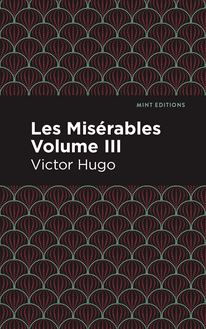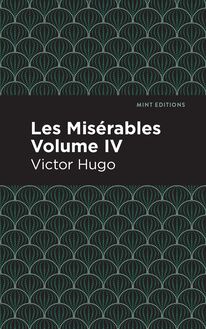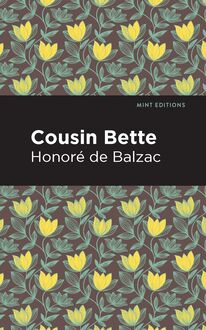-
 Univers
Univers
-
 Ebooks
Ebooks
-
 Livres audio
Livres audio
-
 Presse
Presse
-
 Podcasts
Podcasts
-
 BD
BD
-
 Documents
Documents
-
- Cours
- Révisions
- Ressources pédagogiques
- Sciences de l’éducation
- Manuels scolaires
- Langues
- Travaux de classe
- Annales de BEP
- Etudes supérieures
- Maternelle et primaire
- Fiches de lecture
- Orientation scolaire
- Méthodologie
- Corrigés de devoir
- Annales d’examens et concours
- Annales du bac
- Annales du brevet
- Rapports de stage
La lecture à portée de main
Vous pourrez modifier la taille du texte de cet ouvrage
Découvre YouScribe en t'inscrivant gratuitement
Je m'inscrisDécouvre YouScribe en t'inscrivant gratuitement
Je m'inscrisEn savoir plus
Vous pourrez modifier la taille du texte de cet ouvrage
En savoir plus

Description
Set in 1793 and 1794, The Pioneers tracks the changes of a small town called Templeton, built on the advancing frontier of New York. Natty Bumppo, a hero raised by Native Americans, lives in a cabin, secluded in a forest near Templeton. As the Christmas Eve snow falls, Natty, more commonly known as Leatherstocking, embarks on a tense hunt for a deer. As he tracks the deer down, he runs into Judge Marmaduke Temple, the man who founded the town of Temple. While they argue over who killed the deer, and therefore gets to claim it, they both fail to notice the collateral in their hunt, a mysterious man who has been wounded by a stray shot. Upon this realization, the men rush the stranger into town to be cared for. The stranger is soon identified as a young hunter named Oliver Edwards, who becomes caught in the center of the reoccurring arguments between Leatherstocking and the townspeople of Temple. As a farming town, the people of Temple often drastically change the landscape around them. While the seasons pass, the conversion of hunting grounds to pastures, the mass slaughter of animals, and the many trees that are cut down wears on Leatherstocking. With the help of his best friend, Chingachgook, Leatherstocking attempts to sway Oliver to his side, and convince the town to practice conservation efforts. Consequently, he must overcome the threat of imprisonment, mass slaughter, and natural tragedies.
With elements of romance and adventure, The Pioneers by James Fenimore Cooper reflects on the rapid changes early settlers inflicted upon the environment. With themes of conservation and aging, The Pioneers proves to be as thoughtful as it is adventurous. With legal battles, near death experiences, prison escapes and secrets of ancestry, James Fenimore Cooper’s The Pioneers continues the thrilling saga of the Leatherstocking Tales, following the legendary protagonist, Natty “Leatherstockings” Bumppo as he continues to advocate for the respect of nature.
Now featuring a new, eye-catching cover design and a modern, easy-to-read font, The Pioneers by James Fenimore Cooper is suitable for a contemporary audience. With these accommodations, modern readers are able to explore the land of young America, while considering the cost nature pays for civilization.
Sujets
Informations
| Publié par | Mint Editions |
| Date de parution | 05 janvier 2021 |
| Nombre de lectures | 0 |
| EAN13 | 9781513274478 |
| Langue | English |
| Poids de l'ouvrage | 1 Mo |
Informations légales : prix de location à la page 0,0500€. Cette information est donnée uniquement à titre indicatif conformément à la législation en vigueur.
Extrait
The Pioneers
James Fenimore Cooper
The Pioneers was first published in 1823.
This edition published by Mint Editions 2021.
ISBN 9781513269474 | E-ISBN 9781513274478
Published by Mint Editions®
minteditionbooks.com
Publishing Director: Jennifer Newens
Design & Production: Rachel Lopez Metzger
Typesetting: Westchester Publishing Services
C ONTENTS I II III IV V VI VII VIII IX X XI XII XIII XIV XV XVI XVII XVIII XIX XX XXI XXII XXIII XXIV XXV XXVI XXVII XXVIII XXIX XXX XXXI XXXII XXXIII XXXIV XXXV XXXVI XXXVII XXXVIII XXXIX XL XLI
I
“See, Winter comes, to rule the varied years,
Sullen and sad, with all his rising train;
Vapors, and clouds, and storms.”
—T HOMSON
Near the centre of the State of New York lies an extensive district of country whose surface is a succession of hills and dales, or, to speak with greater deference to geographical definitions, of mountains and valleys. It is among these hills that the Delaware takes its rise; and flowing from the limpid lakes and thousand springs of this region the numerous sources of the Susquehanna meander through the valleys until, uniting their streams, they form one of the proudest rivers of the United States. The mountains are generally arable to the tops, although instances are not wanting where the sides are jutted with rocks that aid greatly in giving to the country that romantic and picturesque character which it so eminently possesses. The vales are narrow, rich, and cultivated, with a stream uniformly winding through each. Beautiful and thriving villages are found interspersed along the margins of the small lakes, or situated at those points of the streams which are favorable for manufacturing; and neat and comfortable farms, with every indication of wealth about them, are scattered profusely through the vales, and even to the mountain tops. Roads diverge in every direction from the even and graceful bottoms of the valleys to the most rugged and intricate passes of the hills. Academies and minor edifices of learning meet the eye of the stranger at every few miles as he winds his way through this uneven territory, and places for the worship of God abound with that frequency which characterize a moral and reflecting people, and with that variety of exterior and canonical government which flows from unfettered liberty of conscience. In short, the whole district is hourly exhibiting how much can be done, in even a rugged country and with a severe climate, under the dominion of mild laws, and where every man feels a direct interest in the prosperity of a commonwealth of which he knows himself to form a part. The expedients of the pioneers who first broke ground in the settlement of this country are succeeded by the permanent improvements of the yeoman who intends to leave his remains to moulder under the sod which he tills, or perhaps of the son, who, born in the land, piously wishes to linger around the grave of his father. Only forty years 1 have passed since this territory was a wilderness.
Very soon after the establishment of the independence of the States by the peace of 1783, the enterprise of their citizens was directed to a development of the natural advantages of their widely extended dominions. Before the war of the Revolution, the inhabited parts of the colony of New York were limited to less than a tenth of its possessions, A narrow belt of country, extending for a short distance on either side of the Hudson, with a similar occupation of fifty miles on the banks of the Mohawk, together with the islands of Nassau and Staten, and a few insulated settlements on chosen land along the margins of streams, composed the country, which was then inhabited by less than two hundred thousand souls. Within the short period we have mentioned, the population has spread itself over five degrees of latitude and seven of longitude, and has swelled to a million and a half of inhabitants, who are maintained in abundance, and can look forward to ages before the evil day must arrive when their possessions shall become unequal to their wants.
It was near the setting of the sun, on a clear, cold day in December, when a sleigh was moving slowly up one of the mountains in the district we have described. The day had been fine for the season, and but two or three large clouds, whose color seemed brightened by the light reflected from the mass of snow that covered the earth, floated in a sky of the purest blue. The road wound along the brow of a precipice, and on one side was upheld by a foundation of logs piled one upon the other, while a narrow excavation in the mountain in the opposite direction had made a passage of sufficient width for the ordinary travelling of that day. But logs, excavation, and everything that did not reach several feet above the earth lay alike buried beneath the snow. A single track, barely wide enough to receive the sleigh, 2 denoted the route of the highway, and this was sunk nearly two feet below the surrounding surface.
In the vale, which lay at a distance of several hundred feet lower, there was what, in the language of the country, was called a clearing, and all the usual improvements of a new settlement; these even extended up the hill to the point where the road turned short and ran across the level land, which lay on the summit of the mountain; but the summit itself remained in the forest. There was glittering in the atmosphere, as if it was filled with innumerable shining particles; and the noble bay horses that drew the sleigh were covered, in many parts with a coat of hoar-frost. The vapor from their nostrils was seen to issue like smoke; and every object in the view, as well as every arrangement of the travellers, denoted the depth of a winter in the mountains. The harness, which was of a deep, dull black, differing from the glossy varnishing of the present day, was ornamented with enormous plates and buckles of brass, that shone like gold in those transient beams of the sun which found their way obliquely through the tops of the trees. Huge saddles, studded with nails and fitted with cloth that served as blankets to the shoulders of the cattle, supported four high, square-topped turrets, through which the stout reins led from the mouths of the horses to the hands of the driver, who was a negro, of apparently twenty years of age. His face, which nature had colored with a glistening black, was now mottled with the cold, and his large shining eyes filled with tears; a tribute to its power that the keen frosts of those regions always extracted from one of his African origin. Still, there was a smiling expression of good-humor in his happy countenance, that was created by the thoughts of home and a Christmas fireside, with its Christmas frolics. The sleigh was one of those large, comfortable, old-fashioned conveyances, which would admit a whole family within its bosom, but which now contained only two passengers besides the driver. The color of its outside was a modest green, and that of its inside a fiery red, The latter was intended to convey the idea of heat in that cold climate. Large buffalo-skins trimmed around the edges with red cloth cut into festoons, covered the back of the sleigh, and were spread over its bottom and drawn up around the feet of the travellers—one of whom was a man of middle age and the other a female just entering upon womanhood. The former was of a large stature; but the precautions he had taken to guard against the cold left but little of his person exposed to view. A great-coat, that was abundantly ornamented by a profusion of furs, enveloped the whole of his figure excepting the head, which was covered with a cap of marten skins lined with morocco, the sides of which were made to fall, if necessary, and were now drawn close over the ears and fastened beneath his chin with a black ribbon. The top of the cap was surmounted with the tail of the animal whose skin had furnished the rest of the materials, which fell back, not ungracefully, a few inches behind the head. From beneath this mask were to be seen part of a fine, manly face, and particularly a pair of expressive large blue eyes, that promised extraordinary intellect, covert humor, and great benevolence. The form of his companion was literally hid beneath the garments she wore. There were furs and silks peeping from under a large camlet cloak with a thick flannel lining, that by its cut and size was evidently intended for a masculine wearer. A huge hood of black silk, that was quilted with down, concealed the whole of her head, except at a small opening in front for breath, through which occasionally sparkled a pair of animated jet-black eyes.
Both the father and daughter (for such was the connection between the two travellers) were too much occupied with their reflections to break a stillness that derived little or no interruption from the easy gliding of the sleigh by the sound of their voices. The former was thinking of the wife that had held this their only child to her bosom, when, four years before, she had reluctantly consented to relinquish the society of her daughter in order that the latter might enjoy the advantages of an education which the city of New York could only offer at that period. A few months afterward death had deprived him of the remaining companion of his solitude; but still he had enough real regard for his child not to bring her into the comparative wilderness in which he dwelt, until the full period had expired to which he had limited her juvenile labors. The reflections of the daughter were less melancholy, and mingled with a pleased astonishment at the novel scenery she met at every turn in the road.
The mountain on which they were journeying was covered with pines that rose without a branch some seventy or eighty feet, and which frequently doubled that height by the addition of the tops. Through the innumerable vistas that opened beneath the lofty trees, the eye could penetrate until it was
-
 Univers
Univers
-
 Ebooks
Ebooks
-
 Livres audio
Livres audio
-
 Presse
Presse
-
 Podcasts
Podcasts
-
 BD
BD
-
 Documents
Documents
-
Jeunesse
-
Littérature
-
Ressources professionnelles
-
Santé et bien-être
-
Savoirs
-
Education
-
Loisirs et hobbies
-
Art, musique et cinéma
-
Actualité et débat de société
-
Jeunesse
-
Littérature
-
Ressources professionnelles
-
Santé et bien-être
-
Savoirs
-
Education
-
Loisirs et hobbies
-
Art, musique et cinéma
-
Actualité et débat de société
-
Actualités
-
Lifestyle
-
Presse jeunesse
-
Presse professionnelle
-
Pratique
-
Presse sportive
-
Presse internationale
-
Culture & Médias
-
Action et Aventures
-
Science-fiction et Fantasy
-
Société
-
Jeunesse
-
Littérature
-
Ressources professionnelles
-
Santé et bien-être
-
Savoirs
-
Education
-
Loisirs et hobbies
-
Art, musique et cinéma
-
Actualité et débat de société
- Cours
- Révisions
- Ressources pédagogiques
- Sciences de l’éducation
- Manuels scolaires
- Langues
- Travaux de classe
- Annales de BEP
- Etudes supérieures
- Maternelle et primaire
- Fiches de lecture
- Orientation scolaire
- Méthodologie
- Corrigés de devoir
- Annales d’examens et concours
- Annales du bac
- Annales du brevet
- Rapports de stage




















